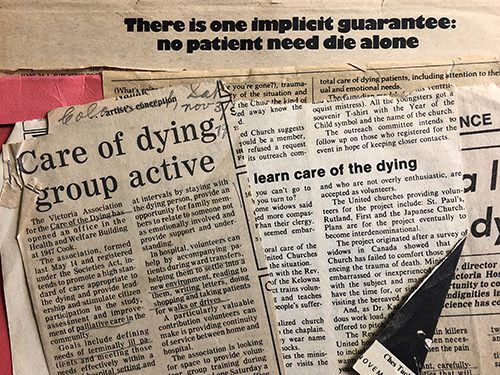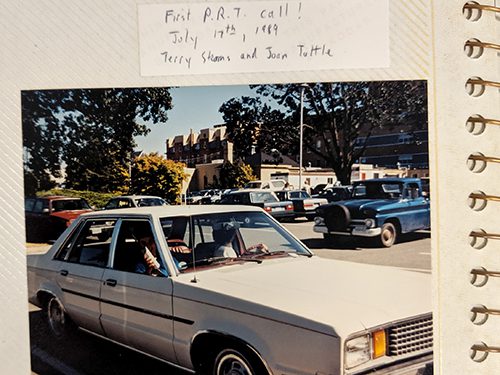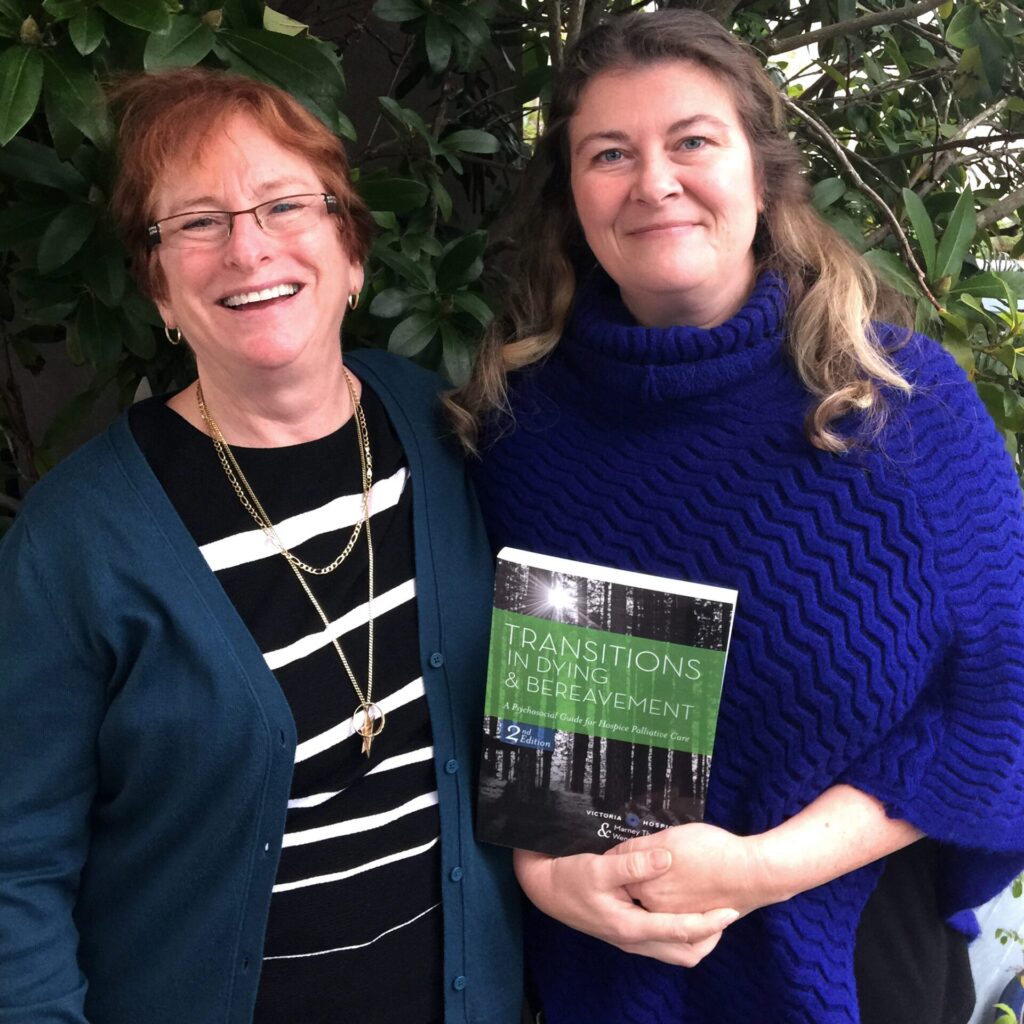
1978 – Victoria Hospice begins as a grassroots movement called the Victoria Association for Care of the Dying (VACD), formed in 1978.
1980 – The provincial government’s Ministry of Health named Hospice Victoria as the first of two pilot projects in British Columbia (the second was Hospice Vancouver) to develop a model of care for the dying, and to assess its value to the community. After evaluating the great success of the pilot project, the Ministry designated Hospice Victoria as an ongoing essential part of the health care system.
1983 – VACD, which had been providing volunteers during the pilot project phase, amalgamated with Hospice Victoria to form Victoria Hospice Society (VHS). The Society received funding from the Ministry of Health to provide seven acute care hospice palliative care beds at Royal Jubilee Hospital’s Bay Pavilion.

1989 – With funding from the Victoria Health Project, the Victoria Hospice Palliative Response Team (PRT) was established. PRT was formed to offer emergency short-term crisis consultation and treatment for problems that would otherwise require admission to hospital. Victoria Hospice also expanded its working relationships with Home Care Nursing, creating an integrated continuum of hospice palliative care from home to hospital.
1994 – Victoria Hospice received additional funding from the ‘Closer to Home’ initiative, enabling PRT to expand into a 24-hour service.
1995 – The Ministry of Health asked Victoria Hospice to take over management of 10 Long-Term Care palliative care beds.
1996 – The third and fourth floors of the Richmond Pavilion at Royal Jubilee Hospital were developed to accommodate a 17-bed hospice palliative care facility.
1997 – Victoria Hospice established the Victoria Hospice and Palliative Care Foundation to assume a primary fundraising role, and to provide investment, financial management and stewardship of funds raised for Victoria Hospice operations.

1999 – Victoria Hospice established the Victoria Hospice Learning Centre for Palliative Care, which became Victoria Hospice Education Services.
2006 – The VHS Research & Development Office was created to better understand current clinical care and to seek ways to increase the quality of care for all.
2014 – the Research and Education Departments were merged.
2019 – Victoria Hospice opens the Victoria Hospice Community Support Centre (CSC) on Chatterton Way. The CSC is the new home of Bereavement Services and will also house community education and volunteer-led patient navigation programs.
A History of Palliative Care
(Adapted from Medical Care of the Dying, 4th edition, Victoria Hospice Society, 2006.)
Modern hospices or programs of care for the dying began in Britain. The most famous is St. Christopher’s Hospice in London, begun by Dame Cicely Saunders in 1967.
The first hospice programs in Canada opened in 1975 at St. Boniface Hospital in Winnipeg, Manitoba, and at the Royal Victoria Hospital under Dr. Balfour Mount in Montreal, Quebec.
Victoria Hospice was established in 1980, which was followed by the formation of The Palliative Care Foundation of Canada in the early 1980s. This was later replaced by the Canadian Hospice Palliative Care Association.